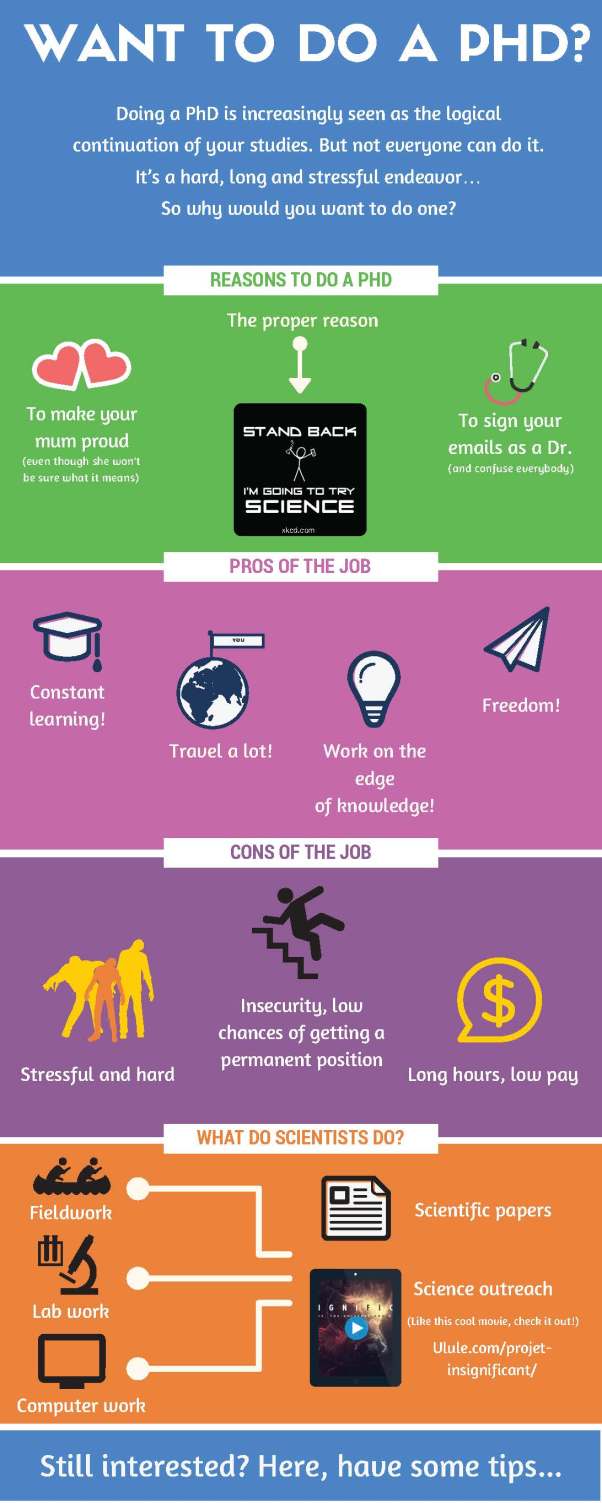Ever wondered whether you had completely missed some of the most important papers in your discipline? Or whether you just read enough? Well, now you can’t stop wondering, since the answer is right here in this new post. About our latest paper, a paper that recommends to read recommended papers.
In ecology. Yeah, I know, the title doesn’t specify “in ecology”. And it should, since a list of ecology papers is going to be of no interest whatsoever for you guys in astrophysics or neurobiology. Plus, the Sheldon Coopers and Amy Farrah Fowlers among you are now probably going to smirk about our classics. My official excuse is that you should always try to have as short a title as possible, in order to be attractive (after all, we are living in an era of unsalvageable lazy millennials). But the real reason is that I wanted to give my blog a little boost, after months of abstinence, so that was on purpose. But instead of frowning with your judgmental scorn, please consider that I didn’t put sex, GoT or Trump in the title, be merciful, and go forward to all your friends.
Now that you’ve made a healthy re-acquaintance with my annoying habit to not-cut-to-the-chase, I should probably start. After all, rule#1 for a successful blog: short posts (see one of my first entries).
For a few years, I’ve been wondering whether I was missing the important papers, and more worryingly, if my students were. There are now so many papers to read, and so little time to do it, it’s easy to stay confined within a small niche of papers – your area of expertise – and miss the big picture, those papers that made your field, and from which the wise professors probably get part of their wisdom.
So, I have been thinking for quite some time of the best way to come up with such a list. It was not easy, because important papers are a very subjective thing to select, let alone rank. But I came up with a simple solution: ask the wise professors. Or more exactly, ask the 665 experts in the Editorial Board of the highest ranking, generalist journals in ecology, who probably are the best suited to evaluate the worth of papers regardless of their field. After receiving all their nominees, an internet vote and clever statistical analyses by my brilliant co-author and good friend Corey Bradshaw, at the time in sabbatical in my group, we came up with …
 (hint: click on the image to get the list – I really must tell you everything…)
(hint: click on the image to get the list – I really must tell you everything…)
This came up with a few surprises, such as the discrepancy between the articles that experts recommend to students and those they have actually read themselves, the fact that the average scientist reads ~40 papers per month (if you thought that maybe you were lazy, now you know for sure), or the huge gender bias in authors of said articles, but, damned, I don’t have any space left (nor you any patience left) to discuss that. I really should learn to focus on the important stuff. Well, this said, for those you interested in the full story, it is now published in Nature Ecology & Evolution. As for the pdfs of those articles, I’m sure they somehow will be found on SciHub…
Ok, remember, you’re supposed to read at least 40 papers per month, so the 100 papers’ list is not going to be a huge additional load in your PhD. So, don’t blame us and go start reading your share. And no, this post doesn’t count as a reading.
Oh, and if you find one or several such papers were utterly useless to you, don’t blame me for choosing them, I didn’t. Don’t even blame me for making you read them, I didn’t either…
The 100 selected articles:
- Darwin, C.R.; Wallace, A.R. 1858. On the tendency of species to form varieties; and on the perpetuation of varieties and species by natural means of selection. Zoological Journal of the Linnean Society 3:45-62
- Hardin, G. 1960. The competitive exclusion principle. Science 131:1292-1297
- Paine, R.T. 1966. Food Web Complexity and Species Diversity. The American Naturalist 100:65-75
- Hutchinson, G.E. 1961. The Paradox of the Plankton. The American Naturalist 95:137-145
- Hutchinson, G.E. 1959. Homage to Santa Rosalia or Why Are There So Many Kinds of Animals? The American Naturalist 93:145
- MacArthur, R.H.; Wilson, E.O. 1963. An Equilibrium Theory of Insular Zoogeography. Evolution 17:373-387
- Hutchinson, G.E. 1957. Concluding Remarks. Cold Spring Harbor Symposia on Quantitative Biology 22:415-427
- Hairston, N.G.; Smith, F.; Slobodkin, L. 1960. Community structure, population control, and competition. The American Naturalist 94:421-425
- Connell, J.H. 1978. Diversity in tropical rain forests and coral reefs. Science 199:1302-1310
- Janzen, D.H. 1970. Herbivores and the Number of Tree Species in Tropical Forests. The American Naturalist 104:501
- May R.M. 1974. Biological populations with non-overlapping generations: stable points, stable cycles, and chaos. Science 186:645-647
- Gause, G.F. 1934. Experimental Analysis of Vito Volterra’S Mathematical Theory of the Struggle for Existence. Science 79:16-17
- Chesson, P. 2000. Mechanisms of Maintenance of Species Diversity. Annual Review of Ecology and Systematics 31:343-366
- Carpenter, S.R.; Kitchell, J.F.; Hodgson, J.R. 1985. Cascading trophic interactions and lake productivity. BioScience 35:634-639
- Levin, S.A. 1992. The problem of pattern and scale in ecology: the Robert H. MacArthur Award lecture. Ecology 73:1943-1967
- Hanski, I. 1998. Metapopulation dynamics. Nature 396:41-49
- MacArthur, R.; Levins, R. 1967. The Limiting Similarity, Convergence, and Divergence of Coexisting Species. The American Naturalist 101:377-385
- Tilman, D. 1977. Resource Competition Between Plankton Algae: An Experimental and Theoritical Approach. Ecology 58:338-348
- Hamilton, W.D. 1964a. The genetical evolution of social behaviour. I. Journal of Theoretical Biology 7:42370
- Charnov, E.L. 1976. Optimal foraging, the marginal value theorem. Theoretical Population Biology 9:129-136
- Tilman, D. 1996a. Biodiversity: Population versus ecosystem stability. Ecology 77:350-363
- Rosenzweig, M. 1971. Paradox of enrichment: destabilization of exploitation ecosystems in ecological time. Science 171:385-387
- Connell, J.H. 1961. The Influence of Interspecific Competition and Other Factors on the Distribution of the Barnacle Chthamalus Stellatus. Ecology 42:710-743
- MacArthur, R.; Levins, R. 1964. Competition, habitat selection, and character displacement in a patchy environment. Proceedings of the National Academy of Sciences of the United States of America 51:1207-1210
- Hardin, G.J. 1968. The tragedy of the commons. Science 162:1243-1248
- Levin, S.A. & Paine, R.T. 1974. Disturbance, patch formation, and community structure. Proceedings of the National Academy of Sciences of the United States of America 71:2744-2747
- Felsenstein, J. 1981. Skepticism towards Santa Rosalia, or why are there so few kinds of animals? Evolution 35:124-138
- Tilman, D. 1994a. Competition and biodiversity in spatially structured habitats. Ecology 75:42401
- Holling, C.S. 1973. Resilience and Stability of Ecological Systems. Annual Review of Ecology and Systematics 4:44927
- Hurlbert, S.H. 1984. Pseudoreplication and the Design of Ecological Field Experiments. Ecological Monographs 54:187
- Vitousek, P.M. et al. 1997b. Human Domination of Earth’s Ecosystems. Science 277:494-499
- May R.M. 1972. Will a large complex system be stable? Nature 238:413-414
- Pianka, E.R. 1970. On r- and K-selection. American Naturalist 104:592-597
- Brown, J.H. et al. 2004. Toward a metabolic theory of ecology. Ecology 85:1771-1789
- Ehrlich, P.R.; Raven, P.H. 1964. Butterflies and plants: a study in coevolution. Evolution 18:586-608
- MacArthur, R.H.; McArthur, J. 1961. On bird species diversity. Ecology 42:594-598
- Simberloff, D.S. et al. 1969. Experimental Zoogeography of Islands: The Colonization of Empty Islands. Ecology 50:278-296
- Grime, J.P. 1977. Evidence for the existence of three primary strategies in plants and its relevance to ecological and evolutionary theory. The American Naturalist 111:1169-1194
- Brown, J.H. 1984. On the Relationship between Abundance and Distribution of Species. The American Naturalist 124:255
- Connell, J.H. 1961a. Effects of competition, predation by Thais lapillus, and other factors on natural populations of the barnacle Balanus balanoides. Ecological Monographs 31:61-104
- Holt, R.D. 1977. Predation, apparent competition, and the structure of prey communities. Theoretical Population Biology 12:197-229
- Anderson, R.M; May, R.M. 1979. Population biology of infectious diseases: Part I. Nature 280:361-367
- Huffaker, C.B. 1958. Experimental studies on predation: dispersion factors and predator-prey oscillations. Hilgardia 27:343-383
- Clements, F.E. 1936. Nature and structure of the climax. Journal of Ecology 24:252-284
- Pulliam, D.W. 1988. Sources, Sinks, and Population Regulation. The American Naturalist 132:652-661
- Lawton, J.H. 1999. Are there general laws in ecology? Oikos 84:177-192
- Lindeman, R.L. 1942. The trophic-dynamic aspect of ecology. Ecology 23:399-418
- Kimura, M. 1968. Evolutionary Rate at the Molecular Level. Nature 217:624-626
- May R.M. 1976. Simple mathematical models with very complicated dynamics. Nature 261:459-467
- Trivers, R.L. 1974 Parent-Offspring Conflict. American Zoologist 14:249-264
- Paine, R.T. 1980. Food Webs: Linkage, Interaction Strength and Community Infrastructure. Journal of Animal Ecology 49:666-685
- Tilman, D.; Wedin, D.; Knops, J. 1996. Productivity and sustainability influenced by biodiversity in grassland ecosystems. Nature 379:718-720
- MacArthur, R.H. 1958. Population ecology of some warblers of northeastern coniferous forests. Ecology 39:599-619
- May R.M. 1977. Thresholds and breakpoints in ecosystms with a multiplicity of stable states. Nature 260:471-477
- Simberloff, D. 1976. Experimental Zoogeography of Islands : Effects of Island Size. Ecology 57:629-648
- Schindler, D.W. 1977. Evolution of phosphorus limitation in lakes. Science 195:260-262
- Kunin, W.E.; Gaston, K.J. 1993. The biology of rarity: Patterns, causes and consequences. Trends in Ecology & Evolution 8:298-301
- Vitousek, P. M.; Reiners W.A. 1975. Ecosystem succession and nutrient retention: a hypothesis. BioScience 25:376-381
- Tilman, D. 1980. Resources: a Graphical-Mechanistic Approach To Competition and Predation. The American Naturalist 116:362-393
- Lande, R. 1980. Sexual dimorphism, sexual selection, and adaptation in polygenic characters. Evolution 34:292-305
- Tilman, D. et al. 1994. Habitat destruction and the extinction debt. Nature 371:65-66
- Fretwell S.D. & Lucas H.L. 1970. On territorial behavior and others factors influencing habitat distribution in birds. I. Theoretical development. Acta Biothereotica 19:16-36
- May R.M. 1973a. Qualitative stability in model ecosystems. Ecology 54:638-641
- Redfield, A.C. 1958. The biological control of chemical factors in the environment. American Scientist 46:205-221
- Tilman, D. et al. 1997. The Influence of Functional Diversity and Composition on Ecosystem Processes. Science 277:1300-1302
- Hamilton, W.D. 1967. Extraordinary Sex Ratios. Science 156:477-488
- Schluter, D. & McPhail, J.D. 1992. Ecological character displacement and speciation in sticklebacks. The American Naturalist 140:85-108
- Hanski, I. 1994. A practical model of metapopulation dynamics. Journal of Animal Ecology. 63:151–162
- Hamilton, W.D. 1964b. The genetical evolution of social behaviour. II. Journal of Theoretical Biology 7:17-52
- Likens, G.E. et al. 1970. Effects of Forest Cutting and Herbicide Treatment on Nutrient Budgets in the Hubbard Brook Watershed-Ecosystem. Ecological Monographs 40:23-47
- Odum, E.P. 1969. The strategy of ecosystem development. Science 164:262-270
- Hubbell, S.P. 1979. Tree dispersion, abundance, and diversity in a tropical dry forest. Science 203:1299-1309
- Grinnell, B.Y. 1917. The niche-relationships of the california thrasher. The Auk 34:427-433
- MacArthur, R.H.; Pianka, E. R. 1966. On optimal use of a patchy environment. American Naturalist 100:603-609
- Tilman, D.; Forest, I.; Cowles, J.M. 2014. Biodiversity and ecosystem functioning. Annual Review of Ecology, Evolution, and Systematics 45:471-493
- May, R.M. & MacArthur, R.H. 1972a. Niche overlap as a function of environmental variability. Proceedings of the National Academy of Sciences of the United States of America 69:1109-1113
- Leibold, M.A. et al. 2004. The metacommunity concept: a framework for multi-scale community ecology. Ecology Letters 7:601-613
- Axelrod, R.; Hamilton, W. D. 1981. The Evolution of Cooperation. Science 211:1390-1396
- Gleason, H.A. 1926. The Individualistic Concept of the Plant Association. Bulletin of the Torrey Botanical Club 53:46204
- Grime, J.P. 1998. Benefits of plant diversity to ecosystems: immediate, filter and founder effects. Journal of Ecology 86:902-910
- Gould S.J.; Lewontin R.C. 1979. The spandrels of San Marco and the Panglossian paradigm: a critique of the adaptionist programme. Proceedings of the Royal Society B: Biological Sciences 205:581-5981017
- Grant, P.R; Grant, B.R. 1995. The Founding of a New Population of Darwin’s Finches. Evolution 49:229-240
- Stearns, S.C. 1976. Life-history tactics: a review of the ideas. The Quarterly Review of Biology 51:3
- Vitousek, P.M. 1994. Beyond global warming: ecology and global change. Ecology 75:1861-1876
- Janzen D.H. 1967. Why mountain passes are higher in the tropics. The American Naturalist 101:233
- Carpenter, S.R. et al. 1987. Regulation of lake primary productivity by food web structure. Ecology 68:1863-1876
- Stenseth, N.C. 1997. Population regulation in snowshoe hare and Canadian lynx: asymmetric food web configurations between hare and lynx. Proceedings of the National Academy of Sciences of the United States of America 94:5147-5152
- Anderson, R.M; May, R.M. 1978. Regulation and Stability of Host-Parasite Population Interactions. Journal of Animal Ecology 47:219-247
- Krebs, C.J. et al. 1995. Impact of Food and Predation on the Snowshoe Hare Cycle. Science 269:1112-1115
- Ginzburg, L.R.; Jensen, C.X.J. 2004. Rules of thumb for judging ecological theories. Trends in Ecology and Evolution 19:121-126
- Chave,J. 2013. The problem of pattern and scale in ecology: what have we learned in 20 years? Ecology Letters 16:42461
- MacArthur, R. 1955. Fluctuations of Animal Populations and a Measure of Community Stability. Ecology 36:533
- Ricklefs, R.E. 1987. Community diversity: relative roles of local and regional processes. Science 235:167-171
- Levins, R. 1966. The strategy of model building in population biology. American Scientist 54:421-431
- Anderson, R.M; May, R.M. 1981. The Population Dynamics of Microparasites and Their Invertebrate Hosts. Philosophical Transactions of the Royal Society of London. Series B, Biological Sciences 291:451-524.
- Brown, W.L.; Wilson, E.O. 1986. Character displacement. Systematic Zoology 5:49-64
- Lande, R. 1993. Risks of Population Extinction from Demographic and Environmental Stochasticity and Random Catastrophes. The American Naturalist 142:911-927
- May R.M. & Anderson, R.M. 1979. Population biology of infectious diseases: Part II. Nature 280:455-461
- Parmesan, C.; Yohe, G. 2003. A globally coherent fingerprint of climate change impacts across natural systems. Nature 421:37-42
- Power, M.E. 1990. Effects of fish in river food webs. Science 250:811-81
PS: if you want the pdf of the 545 nominated articles – including the 100 – you may find them here.































